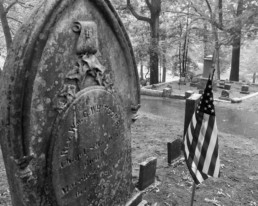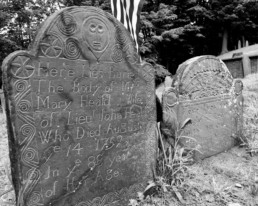have a special love for graveyards. Like libraries, I find them peaceful, contemplative, and rich in story. Since I was a teenager, I have photographed graveyards. I’m certainly not the first to draw parallels between cemeteries and libraries.
“And when my spirit wants no stimulus or nourishment save music, I know it is to be sought in cemeteries: the musicians hide in the tombs; from grave to grave flute trills, harp chords answer one another.” ― Italo Calvino, Invisible Cities
For me, graveyards are a place for walking, listening, and taking photos. Photography is a process of selectively seeing, a deliberate, filtered, framed, detailed, and concentrated way of taking in a scene. I don’t always trust my eyes. Taking photos has taught me that my instincts to see are not always reliable. I’ve taken thousands of crappy photos that at the moment the shutter opened, I thought could be brilliant. Taking good photos is about learning to listen to the light, and the space in which it plays. It is visual, not auditory, but the process is more like listening that seeing.

Graveyards are by their nature still, which makes them ideal for practicing this process. Over the years, I’ve photographed the final resting places of the famous and the unknown with equal commitment, and in the process, I’ve dedicated many hours to the contemplation of life.
I have lived most of my life in the American West, where standing monuments of a century past are rare, and it is nearly impossible to reach back two centuries.

So, when I travel to places where the monuments from the past reach further back — for that’s really what we mean when we say a place has an older history. It’s not that the place wasn’t there at some distant moment in the past, but that there is no surviving record or monument. When I visit old places, I am immediately drawn to the graveyards. In my recent travels in the Northeast, I visited and toured some of the historical attractions: Ralph Waldo Emerson’s house, Louisa May Allcott’s house, Thoreau’s Walden. I even made a trip to a town on the central coast of Maine that was founded by one of my ancestors around the time of the American Revolution.
New England is rich in history, and the graveyards tell the story of our nation just as eloquently as the story of my own family.
